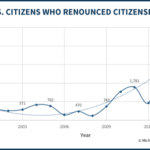Welcome to the October issue of the latest news in Financial Advisor #FinTech – where we look at the big news announcements, and the underlying trends and developments that are emerging, in the world of technology solutions for financial advisors.
This month's edition kicks off with a look at the ongoing growth of "new" robo-advisors from established financial services firms, all of which are pricing 40% - 80% higher than the founding crop of robo-advisors like Betterment and Wealthfront, raising the question of whether 0.25% really is the new price point for investment management, or if robo-advisors will be the ones proven to have the "wrong" pricing.
From there, highlights include:
- Riskalyze raises $20M of Series A funding from FTV Capital.
- Yourefolio raises $500k of seed funding for a new estate planning software solution.
- Black Diamond parent SS&C buys Salentica CRM.
- Envestnet buys Wheelhouse Analytics to launch an advisor price benchmarking service for DoL fiduciary compliance.
- Fidelity gives a preview of its new robo-for-advisors, Automated Managed Portfolio (AMP), but it looks more like a traditional TAMP.
- Portfolio performance and accounting startup Addepar rolls out a new Open API as it continues to grow amongst advisors serving ultra-HNW clientele.
- CapGainsValet reopens for the 2016 tax season, with a new "Pro" service for financial advisors handling end-of-year mutual fund and ETF distributions for clients.
You can view analysis of these announcements, and more trends in advisor technology, in this month's column, including a growing number of broker-dealers offering proprietary CRM (which is both an efficiency improvement, and potential handcuffs on independent advisors), new integrations being built directly into rebalancing software as it becomes a more "core" part of the advisor technology stack, and a look at the rise of "InsurTech" solutions to make it easier (and cheaper) for advisors to help clients with term insurance.
I hope you're continuing to find this new column on financial advisor technology to be helpful! Please share your comments at the end and let me know what you think!
*And for #AdvisorTech companies who want to submit their tech announcements for consideration in future issues, please submit to [email protected]!






 There’s a famous saying that to be a successful business owner, you have to make sure you don’t just work in the business, but that you also work on the business. Which means occasionally taking time out to step away from the daily grind of working with clients and running the business – ideally, by literally stepping away from the business, and
There’s a famous saying that to be a successful business owner, you have to make sure you don’t just work in the business, but that you also work on the business. Which means occasionally taking time out to step away from the daily grind of working with clients and running the business – ideally, by literally stepping away from the business, and 
